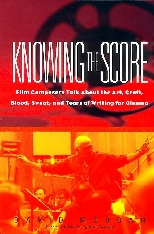|
|
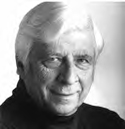
|
|
ELMER BERNSTEIN
on what dictates his being offered a particular assignment:
I suppose it's the luck of the draw. I did those comedies for ten years: Animal House, Meatballs, Airplane!, Trading Places, and on and on. And after ten years of that I began to get nervous because that was the only kind of picture I was offered. So finally I think it was in 1989 I said, "No more." Of course, I didn't work for a year as a result!
In my case I just got lucky because of a promise I had once made a very long time ago to a dear friend, Noel Pearson, that if he ever produced a film I would do the music for it, and that film turned out to be My Left Foot. That was a very good way to break out of the comedy routine. I was lucky then. I don't know what would have happened if Noel hadn't come along with My Left Foot. It's very hard to break out of that kind of a mold easily, especially when the comedies that I was doing were so successful. In a way, it would have been easier if they didn't make any money!
I have relatively little to do with whether a picture makes money or not, but nevertheless if you're associated with money-making, successful projects, then everybody wants you for that kind of project; I've had that several times in my career. When I did The Man with the Golden Arm, all that anybody wanted off me were jazz scores, and that went on for quite a while; and then when I did The Magnificent Seven, I had ten years of Westerns, then ten years of comedies. But I've always quite actively, quite consciously pursued a varied career; I never wanted to be typed.
|
|
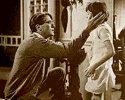
|
|
Audio excerpts:
How dissimilar can you get? Themes from TO KILL A MOCKINGBIRD (1962), and THE MAGNIFICENT SEVEN (1960). (.wav files from the composer's web site, www.elmerbernstein.com)
|
|
CARTER BURWELL
on scoring for Joel and Ethan Coen:
The scores I've done for their movies are my main reason for being in this business. If I weren't working on their movies, if they stopped making movies for some reason, I don't know if I'd really keep doing this. They are by far the most interesting, and Joel and Ethan rarely prevent me from doing anything that I want. I mean, there are very few external considerations. In Hollywood it's not unusual to have people say, "Well, we want to save this place for a song, or the end credits for a song, because the studio is owned by a conglomerate which has a record label associated with it which has a new band that's coming out" — things like that enter into it. But I've rarely heard Joel and Ethan discuss anything that wasn't just about how to make the movie better. We rarely discuss the audience. Once in a while I'll say, "Do you think this point is clear, that point is clear?" But we never think about the audience when we work. I know I for one am just trying to entertain myself.
|
|
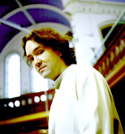
|
|
Audio excerpt:
"Fargo, North Dakota," the haunting opening cue from FARGO (1996), available on TVT Records. (Audio sample via carterburwell.com) |
|

|
|
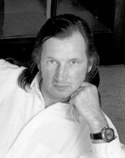
|
|
ELIA CMIRAL
on the hazards facing a composer:
I think the most important decision for us is to find and choose a concept. This concept must come from a complete understanding of the movie, and if the concept is wrong, the composer and director will find out very soon. It's very annoying to see great music written for a movie but with the wrong concept — it doesn't work!
Another annoying thing is we have too much music in films. I feel that maybe we are afraid of silence and that we don't trust our feelings and so we have to tell people how they should feel . . .
My next annoying thing in movies, that we use too much source music. And I hear again and again every day people talking about, "We want to use hip songs or hip contemporary music to be accessible for young audiences." Is it going to be accessible and hip and contemporary two years from now? How about in January?
|
|

|
|
Audio excerpt:
"Ronin Theme" from RONIN (1998), available on Varese Sarabande. (Audio sample at eliacmiral.com.) |
|
JOHN CORIGLIANO
on scoring Ken Russell's Altered States:
Whenever you see a "Creature Features" horror movie you hear strong influences from the primeval scores of Bartok and Stravinsky — film composers have used these techniques so often that they have taken on the quality of a cliché, and they type the film as a genre piece. To take [the film] seriously, the music had to take it to a whole different kind of primitivism, which was much closer to our time. That is the primitivism of making an orchestra almost electronic, not real, which is produced through different techniques — having sounds and sonorities coming out of instruments in which the instruments themselves are sometimes unrecognizable, [because] the kinds of clusters and ways of playing the instruments so distort them that they become primitive, not in the primitivism of the 1940s, but a new kind of primitivism.
[For example,] in the film's first hallucination sequence (where the flutes sound like ancient horns), that's a buzz technique, used by playing like a trumpet into the flute rather than blowing across it, producing a major seventh below the finger pitch. That was taught to me by the well-known flutist Ransom Wilson, and I'd never used it before writing Altered States.
|
|
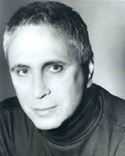
|
|
Audio excerpt:
"Second Hallucination" from ALTERED STATES (1980), available on RCA Victor. (Audio sample from Tower.com)
|
|

|
|
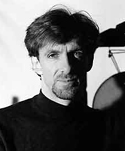
|
|
MYCHAEL DANNA
on what music contributes to a film:
The role of music is to enlighten the audience about the film from a sonic perspective, and to bring some kind of sonic understanding of the themes of the film. I think the most important thing for me is that what's on the screen visually is a given, and I don't see the need to repeat that very often, or underline it or exaggerate it. If the music can come around and say the same thing that the picture is saying [but] from a different angle, or at least say a theme that the filmmaker wants to say in a completely different way — and in a provoking way — then that is when it's just a joy to work at this.
|
|
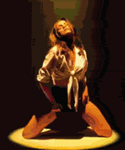
|
|
Audio excerpt:
"Something Hidden" from EXOTICA (1994), available on Varese Sarabande. (Audio sample from amazon.com.)
|
|
PATRICK DOYLE
on writing introductions to popular standards for Kenneth Branagh's musical version of Love's Labour's Lost:
[Ken] uses a number of songs which are Cole Porter, Irving Berlin, Gershwin songs, where I find your standard 4-bar, 8-bar, 16-bar, whatever-bar intro to them didn't work because it was Shakespeare, and to have a song in the middle of Shakespeare just seemed to surprise me. I mean, you're surprised when you watch an MGM musical and see the song come out of the action, but you somehow accept that genre; with the added thing of Shakespeare it just seemed a bit too unusual.
So I found eventually, after lots of to-ing and fro-ing, that what was needed were much longer introductions: i.e., the underscore became almost like an albatross taking a 150-yard take-off as opposed to a sparrow taking two feet before it's in flight. The audience had to be guided into the moment when the song appeared, but it still had to remain very natural. One of the introductions in particular, it's almost a full minute-and-a-half before the lyrics begin, and when the song happens it seems totally natural.
|
|
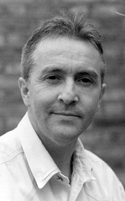
|
|
Audio excerpt:
"With That Face.../No Strings" from LOVE'S LABOUR'S LOST (2000), available on Sony Classics. (Audio sample from Amazon.com) |
|

|
|
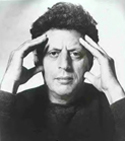
|
|
PHILIP GLASS
on the requirements of the score for Martin Scorsese's KUNDUN:
I told Marty the score has to do two things: one is to create unmistakably the sense of place -- the music would transport you immediately from the very first notes to an exotic (by Western standards) environment, filled with images that were totally unfamiliar, and the music was the magic carpet that was going to take you there. As you know he didn't film it in Tibet — basically it's a virtual film with the mountains painted in, they built everything in Morocco and they put in second unit shots with the Himalayas afterwards — and my concern was that the feeling of place could have been compromised. Now it turned out not to be the case; in fact Dante Ferretti is a fabulous art director, it looked excellent.
Secondly, I felt the music was a bridge between the audience and a culture, and it's important to remember that the Tibet of that film simply doesn't exist anymore. The costumes don't exist, the clothes don't exist, the environment is gone, it's completely gone, so basically we had to create a virtual Tibet that's no longer existing — and then we had to create a doorway into that world so that people could look at it and have some familiarity with it. In my view the images and the story are so exotic by our familiar standards, so I thought of someone who went to the film — an ordinary German or Italian or American — and I wanted to provide them with a bridge, even if it's one of those little swaying bamboo bridges that you see up in the Himalayas: It's not much of a bridge, but it's enough, and with it you can get from one place to another. And Marty liked that idea. He said, "Great, send me some music."
|
|
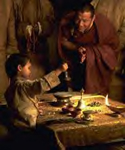
|
|
Audio excerpt:
"Choosing" from KUNDUN (1997), available on Nonesuch. (Real Audio clip from www.nonesuch.com) |
|
ELLIOT GOLDENTHAL
on the contribution of music to drama:
When Bernard Herrmann in Psycho took the sound of a screetchy bird and sort of morphed it into what it might feel like to be stabbed, the music took on a better, more significant role than a sound effect would have in that scene, in the sense that when you abstract something you create a different reality — you've created something more significant because you've entered into a state of dreams. And when you enter into a dream-state, things become more and more long-lasting. It's not just hearing a tire screetch, but to hear an orchestration of how that tire screetch makes you feel, is one step into the world of art and not just craft.
|
|
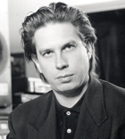
|
|
Audio excerpt:
"Swing Rave" from TITUS (1999), available on Sony Classical. (Real Audio clip from www.sonyclassical.com) |
|
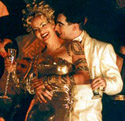
|
|
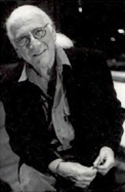
|
|
JERRY GOLDSMITH
on assignments:
A problem I've been having is that for every one picture I do I get nine other pictures [offered]. And they wait so long, till the picture's shot, 99% chance I can't do it, there's a conflict. Every once in a while one comes up where it's completed; HOOSIERS was one. They didn't think they had the money for me when they started the picture, and so down the line when they finished, they realized they had something special and they came to me and I happened to be free at the time to do it.
I'd be happy if I were doing HOOSIERS all the time. Or A PATCH OF BLUE or CHINATOWN or PATOON. I'd love to have done ON GOLDEN POND or IRRECONCILABLE DIFFERENCES. That's what I try to find, a picture with relationships. The problem is, I don't think that people really think of me generally in those terms. If you look at the pictures I've done, most of them are action, epic kind of pictures; the small, intimate pictures I never seem to get. Occasionally every two years [one] comes along for me. But they don't make too many of those pictures; they're all hardware pictures. But the challenge of those pictures is trying to get the emotion into them.
|
|

|
|
Audio excerpt:
MP3 excerpt from "The Finals" from HOOSIERS (1987), released by Polydor. |
|
MARK ISHAM
on choosing the orchestration for Fly Away Home:
There's an example of the "sound" of the instrument helping to direct the music. For Fly Away Home the solo violin gave us a chance to get very intimate. At points in the film, like when the little girl finds the eggs and has the eggs in the drawer in the barn and hatches them, it has very, very intimate moments, and I wanted to keep that intimacy. In addition, it's a story that in some ways starts very small and then broadens way out, becoming bigger and connecting to things much bigger than itself — just as the girl, who's withdrawn following the death of her mother, learns to extend herself outward into the world and into friendships, and her relationship with her estranged father. And yet, there's something sort of off-kilter about the whole thing because these are geese, it's not like it's a group of kids or something.
Well, I was always a big fan of the Penguin Cafe Orchestra, this little band out of England that Simon Jeffes founded, playing kind of a folk/classical music with an eclectic group of instruments — things like violin, accordion, spinet, ukelele, telephone, rubber band. They've done a lot of really great stuff, and I always wanted to try something like that. And I thought, what a great idea of having a small, slightly quirky mixture of instruments that would play the intimate scenes with the girl and the geese, and then as she breaks out of her shell and extends herself into the world, expands herself, the music extends itself as well, becoming larger and fuller.
All of a sudden the basic structure emerged which was that this little core of instruments featuring Sid on violin [including solo violin, solo cello, clarinet, bass clarinet, accordion, electric bass, piano, electric piano, mandolin, harp and marimba] was actually surrounded by an orchestra, and they played on their own and with the orchestra, and the orchestra accompanied them.
|
|
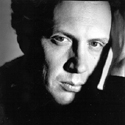
|
|
Audio excerpt:
An MP3 excerpt of "Igor's Big Adventure" from FLY AWAY HOME (1996), not commercially released.
|
|

|
|
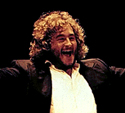
|
|
MICHAEL KAMEN
on scoring Terry Gilliam's Brazil:
I thought I would write this valiant heroic violin solo to represent Sam, and the funny thing was we have a fiddle player in London who was my orchestra leader, who is one of the most experienced and talented musicians in the London film music scene, Sid Sax. He's played for Bernard Herrmann, Nelson Riddle, he played violin on "Eleanor Rigby," this guy has credits a mile long, and is a fabulous fellow and fabulous musician, but not any longer a fabulous fiddle player; he can no longer maneuver the instrument as he used to. So I wanted to bring in Pincus Zuckerman or some other friend of mine to take the solos because otherwise I knew Sid would stand up at a minute's notice and rattle off the whole part, and I wanted to avoid that. One thing led to another, I couldn't get Zuckerman, but I had all these fiddle solos written into the score. Despairing that I was going to have to leave them out and record them later, I didn't know what I was going to do. And then Sid picked up and played them in this wonderfully vulnerable way. They actually made more of a statement about Sam's character — this guy who dreamt that he had hair, that he had muscles, that he could fly — because it was played by this slightly weedy violin who was valiantly playing heroic music, but only valiantly. And that was a wonderful marriage of temperament to the story.
|
|

|
|
Audio excerpt:
"Escape?" from BRAZIL (1985), available on Milan. (Audio sample from Amazon.com) |
|
ALAN MENKEN
on the current state of animated musicals:
Frankly there's not quite the rush for song-driven projects that there was five years ago. Seven years ago it was all cresting upwards. It has subsequently in films slid downwards. . . . It has stopped, like if you put the brakes on a train it takes a while for it to screech to a halt. I think the era of the animated musical is kind of waning. It doesn't mean there won't be animated musicals; I'm working on one now, it's a western for Disney. Animated film musicals still regularly make $100 million a picture. But most of the projects coming up from Disney have songs under the material (like TARZAN), or don't have songs at all. And that I presume is a phase.
I saw it happening after POCAHONTAS. I got a sense that the public for the most part was saying, "Oh yes, an animated musical; I know what those are," and not getting into the differences between HUNCHBACK OF NOTRE DAMD and HERCULES, or any of the other projects that have come along with distinctions. When I saw that those distinctions were not being seen, I realized that people were not looking at them with a fresh eye anymore — they'd just became a genre that you either want to see or you don't.
|
|
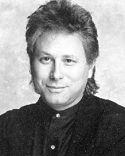
|
|
Audio excerpt:
"Gaston" from BEAUTY AND THE BEAST (1991), available on Uni/Disney. (Audio sample from Amazon.com)
|
|
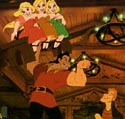
|
|
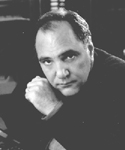
|
|
BASIL POLEDOURIS
on temporary tracks:
It takes a very special director to want to turn the film over to a composer -- some directors are really terrified to let someone else have that much control over how the film's going to sound, and for that reason I think they find a lot of security in the so-called temporary track, because it's a given. They kind of have an idea of what it is, and may have been successful with preview audiences so therefore that music has become a part of the film. Those are the ones I find I can offer the least to, because I'm not interested in being an arranger. If somebody falls in love with a particular piece of music or particular bunches of pieces of music from other composers, they should hire those composers, or hire a really good arranger to copy it all without getting sued.
|
|

|
|
Audio excerpt:
"Klendanthu Drop" from STARSHIP TROOPERS (1997), available on Varese Sarabande. (MP3 from the www.basil-poledouris.com site) |
|
JOCELYN POOK
on scoring Stanley Kubrick's EYES WIDE SHUT:
At the beginning [Kubrick] was very open to suggestions actually. At one point he said, "I think it should be quite choral, that sort of weirdness" is the word he used! At the beginning of something you're usually both searching for the right thing. It's very rare that you can say, "Right, I think it should be an orchestra with French horns." Usually you are grappling with what the right thing is. It's a journey you're both taking to find the right thing.
The orgy scene, that's a funny one because it was very difficult to know what the right music was. And he'd tried so many different things before I came along — baroque music, all sorts. I didn't have much of a brief for that, he just said, "Look, I want sexy music!" And how do you define that? Actually some of my early sketches are nothing like the final result, they could not be more opposite to "Migrations." I tried other things which were more feminine, these backwards singing female vocals, quite ethereal and strange. But he just heard that and felt that was the right thing.
|
|
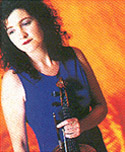
|
|
Audio excerpt:
"Migrations" from EYES WIDE SHUT (1999), available on Warner Sunset/Reprise Records. (Audio sample from jocelynpook.comm) |
|

|
|
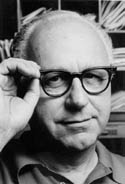
|
|
DAVID RAKSIN
on the ability of film music to stand away from a dramatic context:
There are times when you have to sacrifice the ability of the thing to stand on its own feet because the dimensions [of the film] do not permit it. In other words, you may not be able to have the correct development or correct proportions in the sequence because you can't be developing something musically when the picture's doing something else. If you're going to write a piece of music which does not acknowledge the narrative, what are you doing? So what you do is you try to write a piece that has music in it. You know, anybody can write film music, the problem is, can you write music? . . .
If you're a composer who really gives a goddamn, what you do is you just watch the film as though you were a yokel and you absorb what's going on; if [what you write then] strikes you as right for the film, that's something! If in addition it's music, that's even better.
|
|

|
|
Audio excerpt:
"Theme" from LAURA (1944), available on a Sony compilation "Music from Hollywood." (Audio sample from amazon.com) |
|
DAVID SHIRE
on the value of having time to develop a score:
If they've invited you to the shooting — it means you're in on the project that early and you've read the script — then your subconscious can start germinating themes. THE CONVERSATION score evolved over a long time; I was at the first read-through before they even started shooting. Francis [Coppola] wanted me around to soak up the atmosphere. There's time to do it when you're working with a great director who's very responsive to music and its values, and so you have six months to evolve. But more and more assignments get handed out at the last minute, [where] you have 10 days to do a score.
You have to come up with your basic material which is the name of the game for me. [If you have great basic material, the cues almost take care of themselves.] You need what I call "throwaway time"; the time to write a theme, put it away for 2 days or a week, come back to it and say "That sucks!" Then you can go, "Oh, I see what I should do." That's the process. That's one of the reasons I like writing musicals for the theatre; it can take a year or two or three to write a musical during which a score evolves and builds on itself, and makes rich connections — and you throw away!
|
|
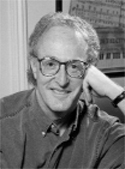
|
|
Audio excerpt:
"The End of the Day " from THE CONVERSATION (1974), available on Intrada. (Audio sample at intrada.com) |
|

|
KNOWING THE SCORE:
FILM COMPOSERS TALK ABOUT THE ART, CRAFT, BLOOD, SWEAT AND TEARS OF WRITING FOR CINEMA
By David Morgan
Published by HarperCollins
ISBN: 0380-80482-4
$14.00 US / $20.95 Canada
"Fascinating ... [An] excellent examination of this mostly mysterious process."
Java Magazine
"This is all fascinating stuff, and the only problem with the book is that it makes you want to see the movies it discusses again and this time really listen to them."
Booklist
"A worthy insight to the world of film music."
Austin Chronicle
"**** ... [Add] this to your book shelf and listen to the music (and view the films too) as you read this book."
Film Score Monthly
|
